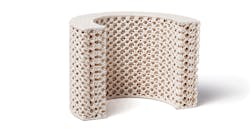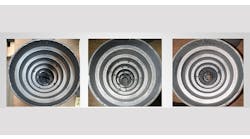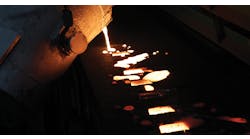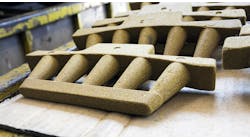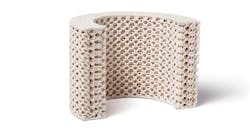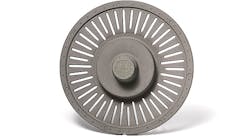Latest from Ask the Expert
Normally, refractory coatings are classified according to the refractory type. In steel casting applications, for example, the high pouring temperatures are almost close to
melting point of silica. Zircon and alumina are more appropriate choices, and zircon can be used easily with all solvent types. Due to the cost of zircon, various aluminum silicates and other alternatives may be considered, too. On the other hand, because steel has a very low carbon content, it is sensitive to carbon pick-up: A refractory material like graphite is not recommended as a coating for casting steel.
Iron casting offers a wider range of refractory-coating options than steel casting, including graphite. Treating sand cores or molds with graphite coatings can help to minimize metal penetration. Graphite-containing coatings also aid in improved peel during shakeout, which can further minimize cost and help to improve casting finishes.
The properties of the coating during the application process must be suited to the application method. The most popular methods for applying a refractory coating are brushing, dipping, spraying, and flow coating. These methods differ greatly from each other in the coating properties required. Critical details like the rheology of the coating need to be taken into account when selecting the right coating for your application process. Brushing, for example, must flow without generating surface imperfections like runs and brush marks. A coating used for dipping cores needs special rheological properties to minimize teardrops. Formulations used in a flow coating application must have sufficient flow to run off the core or mold, and not cause excessive teardrops or runs on the surface that lead to casting surface defects.
Each foundry should develop its own coating control plan for optimal application. Proper handling and monitoring of your coating is critical for your application, too. There should be more than one coating testing method in place. The most common coating tests are viscosity, percentage of solids, flow or Zahn cup viscosity, Baume, and weight per gallon.
Historically, Baume has been the most common test but users must be aware of its drawbacks. In order to avoid misleading Baume readings, an additional test such as weight per gallon or percent solids is recommended. The timing of the test after sampling should be consistent. Visual inspection for entrapped air or foreign material contamination will further reduce error with weight per gallon readings. Consistent coating control will lead to dimensional accuracy and improved reproduction.
Inadequate mixing or over-mixing of the coatings could lead to misleading values of viscosity and Baume, or even totally destroy the characteristics that are built into the slurry. It is possible to not achieve what the refractory coating is designed to do simply because of the way the coating is handled and controlled.
Finally, proper application and complete drying of coating is critical to prevent further degradation of sand cores and molds, as well as reducing potential gas/moisture defects.
Here some questions to keep in mind when choosing a refractory coating:
1. What metal is going be cast?
2. What is my objective: improved surface finish? Reduced veining and metal penetration? Lower gas evolution?
3. What method of application will be used?
4. How fast are you expecting your coating to dry?
5. What is the storage life?
6. In what type of container will it be shipped, and how will I handle that container?
7. Does the supplier maintain a stock of the coating for quick reordering?
Join the Conversation. Email Your Questions for ASK Chemicals
Share your insights, opinions, and elaborate on the questions and the experts' answer(s). You must be logged in to the website in order to post your comments.
